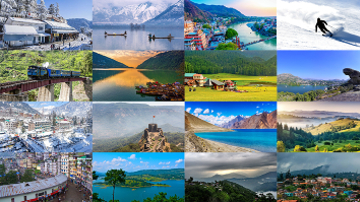Mystical Marvel: Discovering Beijing's Iconic Great Wall
Towering across the rugged landscape of northern China, the Great Wall is more than a marvel of engineering; it is a testament to the resilience, ingenuity, and vision of a civilization that dates back thousands of years. Stretching over 13,000 miles and winding its way through mountains, forests, and deserts, this iconic monument is indelibly linked with China's rich cultural heritage. Within its stones lie the collective aspirations, fears, and fortitudes of generations long gone, and its magnitude can only be fully comprehended when experienced first-hand. This article takes you on a journey of discovering the Great Wall, with a particular focus on its stretches near Beijing.
Historical Overview
Built over the course of several dynasties, starting from as early as the 7th century BC, the Great Wall served primarily as a defense mechanism against invasions from the north. However, it also had other functions, such as border control, regulating trade, and serving as a means for communication. The most well-preserved and famous parts were constructed during the Ming Dynasty (1368-1644), and it's mainly these sections that attract millions of visitors every year.
Exploring the Sections Near Beijing
Badaling
The most visited section, Badaling, is easily accessible from Beijing and provides a relatively easy walking experience, replete with guard towers and panoramic vistas. This section has been restored and can get crowded, but the convenience and amenities make it a suitable choice for first-timers.
Mutianyu
Less crowded than Badaling but equally majestic, Mutianyu offers a serene walking experience through wooded areas. Cable cars and a toboggan ride add a modern twist to the ancient setting. A watchtower known as the "Ox Horn Edge" is a must-see, offering awe-inspiring views.
Jinshanling
For those seeking a more challenging trek and fewer crowds, Jinshanling is an excellent choice. The section is partially restored, allowing you to experience both the decaying, original wall and the renovated sections. This stretch is a photographer’s dream, with its dramatic landscapes and intricate watchtowers.
Simatai
This is the only section open for night tours, and it’s a surreal experience to see the Great Wall under the moonlight. Simatai retains its original appearance, and its steep, uneven paths make it a challenging but rewarding experience.
Tips for Visitors
- Best Time to Visit: Autumn and spring are the most comfortable seasons to visit the Wall. Summer can be hot, and winter can be bitterly cold.
- What to Bring: Wear sturdy hiking boots, carry water, and pack light snacks.
- Guided Tours: Consider taking a guided tour for a more informative experience.
- Be Respectful: This is a historic site. Please follow guidelines and do not remove any stones or write graffiti.

.jpg)





